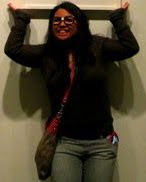According to the U.S. Natural Park Service, which works under the U.S. Department of the Interior, light pollution is "Principally, the illumination of the night sky caused by artificial light sources, decreasing the visibility of stars and other natural sky phenomena. Also includes other incidental or obtrusive aspects of outdoor lighting such as glare, trespass into areas not needing lighting, use in areas where or at times when lighting is not needed, and disturbance of the natural nighttime landscape."
There are four types of light pollution. The first is sky glow, which is the brightening of the night sky in urban or inhabited areas. Sky glow is a major issue within cities. Light trespass, the second type, occurs when light falls in areas unintentionally or in areas where the light is unwanted or unneeded. The third type is bright light that reduces visibility and causes discomfort. Lastly, clutter is the grouping of excessively bright lights. Light clutter is another major issue in urban areas. (IDA Practical Guide)
Light Pollution in North America



No comments:
Post a Comment